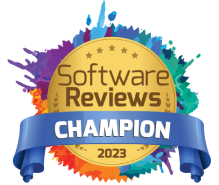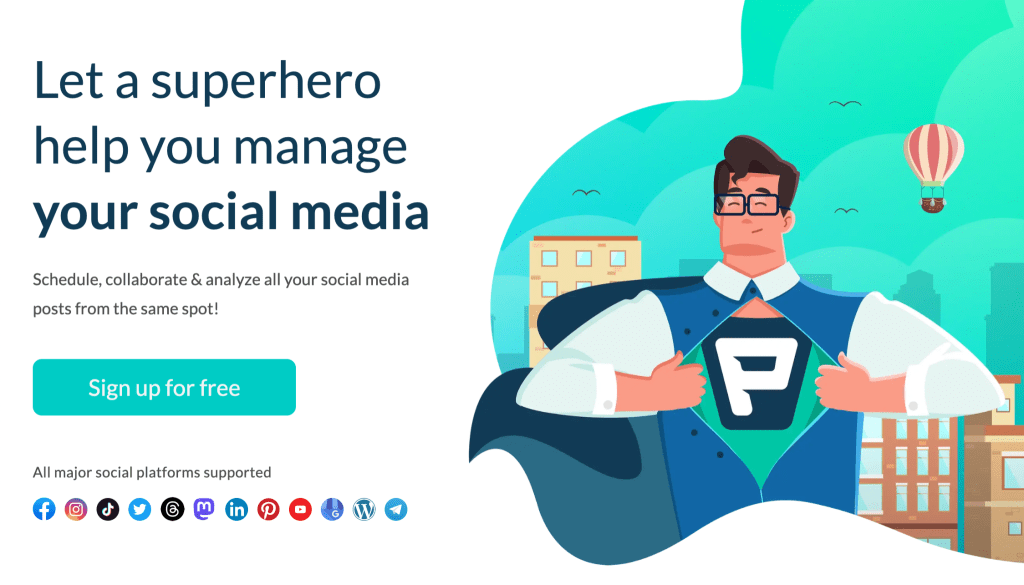
LinkedIn is widely regarded as the best professional social network. And, many people know LinkedIn connections enable recruiters to keep track of their network, friends, and business contacts, as well as assist recruiters in hiring top talent.
But how did LinkedIn get to where it is today? What is LinkedIn, and how has it changed networking? Who is Reid Hoffman?
In this article, we’ll uncover when LinkedIn started, why it was founded, and how LinkedIn has improved networking.
Let’s take a closer look!
What Is LinkedIn?
LinkedIn is the world’s largest professional network on the Internet. Most people use LinkedIn to find the right job or internship, build and strengthen professional relationships, and learn the skills they need to succeed on the job.
A full LinkedIn profile can help you connect to opportunities by showcasing your unique professional story through experience, skills, and education.
You can also use LinkedIn to host offline events, join groups, write articles, post photos and videos, and more.
What is LinkedIn Primarily Used For?
LinkedIn is a platform for anyone looking to advance their career. This may include people from various professional backgrounds, such as: small business owners, software engineers, writers and students.
LinkedIn members use LinkedIn to access a network of professionals, companies, and groups inside and outside the industry.
The Origins of LinkedIn: Decades of Growth
LinkedIn has genuinely changed how companies interact by contextualizing messages and providing detailed work history information. Here’s a recap of the history of LinkedIn and how Reid Hoffman created a professional social network used by 750 million people today.

Late 2002: Former PayPal Executives Unite
Here’s how it happened: the idea for LinkedIn was hatched in 2002 in the living room of Reid Hoffman, who was then an executive on the board of Paypal.
The idea for LinkedIn was to create one of the first business-oriented online social networks. Then, Reid Hoffman founded LinkedIn with Allen Blue, Konstantin Guericke, Eric Lai, and Jean-Luc.
2003: Sequoia Capital Invests
The official launch took place on May 3, 2003, offering the first members free access to job offers, personal profiles, search, and advertising.
One month after the launch, 4500 members joined the platform thanks to the personal invitation of the co-founders.

By December 2003, LinkedIn had grown to 81,000 members. This success prompted Sequoia Capital to lead the Series A investment in the company the same month.
2004 – 2007: Competition and Reaching Profitability
In 2004, user numbers continued to skyrocket, with 500,000 members at the beginning of the year to almost 1 million by August.
Later in 2005, LinkedIn Jobs was launched with LinkedInsight for HR and recruiters to evaluate, check, and prioritize candidates using the three R’s of LinkedIn:
- Relationships
- References
- Reputation
That same year, the company reached 3 million members and launched LinkedIn Groups and Premium Business, which offers unlimited searches and enhanced communication for recruiters and searchers for $14.99 per month.
By 2006, LinkedIn had over 8 million users.
In February 2007, Dan Nye became CEO, Reid Hoffman transitioned to President & Chairman, and the company reached 10 million members.
2008 – 2010: Further Funding and Internationalization
In June 2008, The venture capital firms Sequoia Capital, Greylock Partners, and others acquired a 5% stake in the business for $53 million, giving it a post-money valuation of approximately $1 billion.
The social network then had 33 million members across 200 countries, so 50% of the members were not American.
LinkedIn began its expansion of its Asia Pacific team in November 2009, when it opened offices in Mumbai and Sydney.
In 2010, Tiger Global Management LLC provided LinkedIn with a $20 million investment when the social media company opened its international headquarters in Dublin, Ireland.
In October, Silicon Valley Insider ranked the company 10th on its list of the 100 most valuable startups.
As of December 2010, the company had a $1.575 billion valuation in the private markets.
2011 – 2013: Social Media Success
In 2011, Linkedin confirmed its success as a social network with record profits. Indeed, this year, the platform earned $154.6 million in advertising revenue, more than Twitter, which earned $139.5 million.
At the end of 2011, there were 150 million members on LinkedIn.

At the beginning of 2012, the social network has over 1 million groups.
LinkedIn also launched new features the same year, such as the Influencer Program.
2013 – 2016: Series of Acquisitions
In 2013, LinkedIn acquired Pulse, a news reader for the web and mobile, for $90 million.
Then in 2014, the social network acquired Bright, a job search service, for $120 million as well as Newsle, an alert service.
In 2015, LinkedIn acquired three companies:
- Careerify: a Toronto-based startup focused on software that helps companies hire people.
- Refresh.io: an iOS app that lets you discover information about people in your network before meeting them.
- Lyndia: a company that offers learning services and the development of new skills for $1.5 billion.
These acquisitions, along with the social network’s success, attracted digital giants. Thus in 2016, Microsoft announced the acquisition of LinkedIn. At the end of the year, the social network had 469 million members.
2017 – 2020: Open For Business Launches
In 2017 LinkedIn unveiled its new desktop website design, which was rolled out over several weeks. The new design is supposed to have “a simpler, app-like look” and be similar to Facebook’s desktop website design.
In February 2018, LinkedIn launched the Sales Navigator app program. In the same year, the social network launched Referrals and Ask for a Referral, which let members applying for a job know they have a contact who could help them.
In 2019, the company launched LinkedIn Talent Hub, an applicant tracking system (ATS) that allows the HR and recruiter to search, manage and hire on one platform.
In 2020, Ryan Roslansky became CEO, and Jeff Weiner became Executive Chairman. LinkedIn reached $8.85 billion in annual revenue.
2021 – Present: Lay-Offs and Future Challenges
As of September 2021, LinkedIn had more than 774 million registered members in over 200 countries.
The company continues to innovate by offering more and more tools to help companies achieve their goals. In 2021, Linkedin will offer new features such as:
- Search Engine Optimization (SEO) for articles and newsletters to facilitate the search for content creation, both internally on LinkedIn and externally on search engines like Google.
- Top Performing Posts, which shows the posts ranked by impressions gained in the selected period.
- Lead Gen Form, which allows you to collect quality leads from members who visit your LinkedIn page or storefront page. Members can open and submit a pre-filled form with their information.
Key Takeaways
Let’s list shortly and make a quick recap of what we discussed in today’s article.
- People use LinkedIn for a job or internships and to build professional partnerships.
- Reid Hoffman founded LinkedIn and was then an executive on the board of Paypal.
- The venture capital firms Sequoia Capital, Greylock Partners, and others acquired a 5% stake in the business.
- In 2011, Linkedin confirmed its success as a social network with record profits.
- LinkedIn continues to innovate by offering more and more tools to help companies achieve their goals
What do you think of today’s article? Did you learn more about LinkedIn? Tell us more in the comments below!








